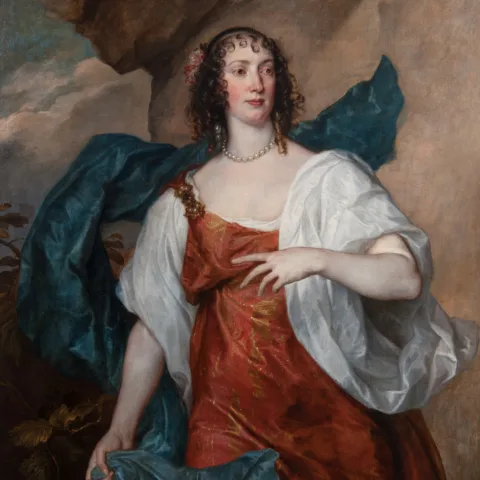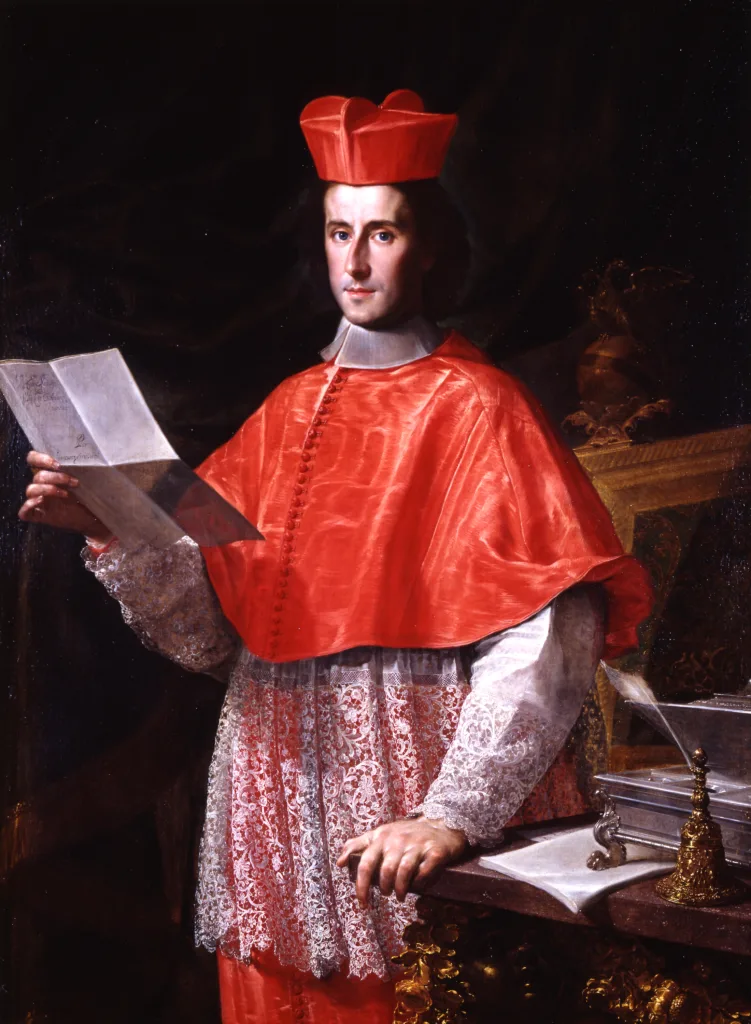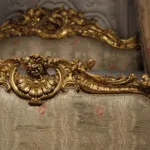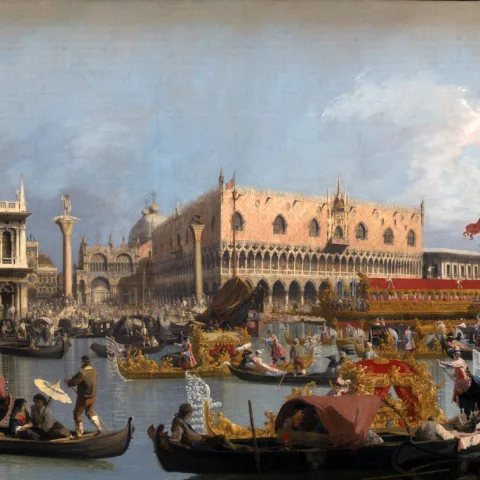
Cardinal Pietro Ottoboni (1667 – 1740)
c. 1690
Francesco Trevisani (1656-1746)
Francesco Trevisani was a Venetian artist who went to Rome in 1681, and was taken up by a clique of highly educated Cardinals who were intent on developing taste in the Papal capital. The most prominent became his leading patron, Cardinal Pietro Ottoboni (1667-1740), the great nephew of Pope Alexander VII and a leading light of the Academy of Arcadia, an organisation devoted to the reform of painting, theatre, poetry and music. His circle included the violinist Arcangelo Corelli, and the composers Scarlatti and Handel . This portrait shows him as a most worldly patron, wearing a biretta and dressed in a red silk cardinal’s robe, resplendent in lace flounces. His hand rests on a gilt and marble table and on it is a brass bell and silver inkstand, all decorated with his arms of a double-headed eagle. His music library survives in the Henry Watson Music Library, Manchester.
This was painted around 1689 by Francesco Trevisani and bought by John Bowes when he was in northern Italy in the autumn of 1874.
Ottoboni was the last Cardinal-nephew when tradition allowed the Pope to appoint members of his own family to key positions. He was also vice-chancellor of the Holy Church of Rome, which gave him an annual income of about £5m in today’s value. He was a great patron of the arts. He even wrote texts of cantatas and librettos – a possible reference to the paper he is holding in his portrait – but his church position meant he could not publish them under his own name.
Musicians who had him to thank for advancing their careers included Arcangelo Corelli, German-born British composer George Frideric Handel and fellow Venetians Antonio Vivaldi and Tomaso Albinoni.
Showing in the Journey in Colour exhibition
18 June - 30 October 2022 BOOK TICKETSFrom the blog
Visit the blogA Fine & Fashionable Storage Mount
Back to Basics: Upholstery Conservation Workshop
Bengali Bedhangings & Portuguese Portraits
MORE HIGHLIGHTS












